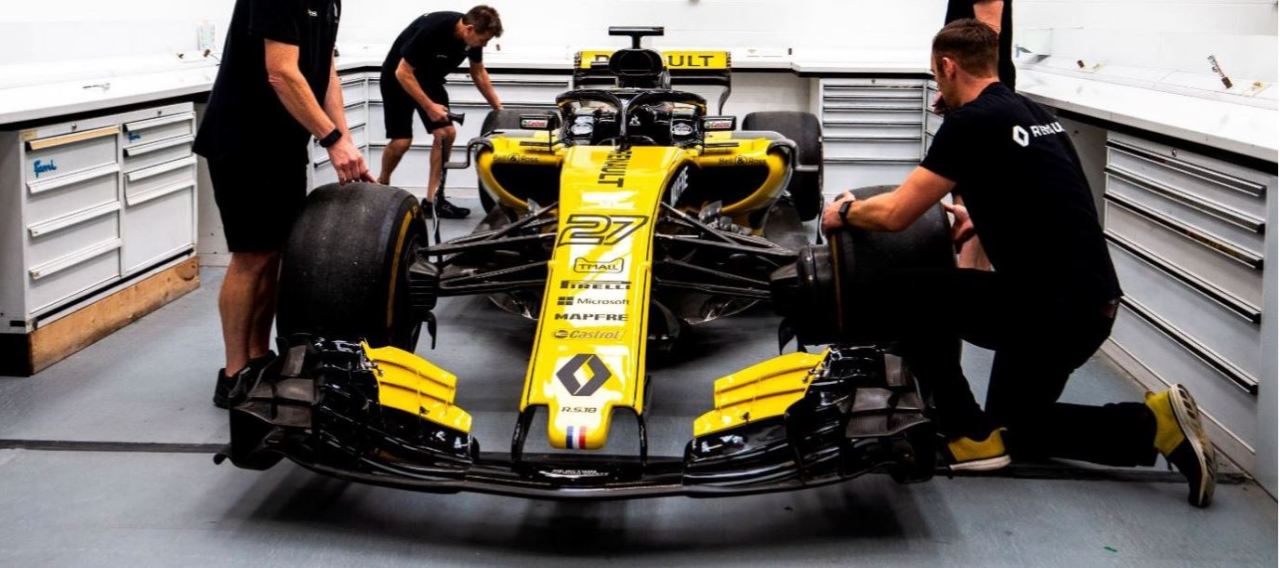Блог - New Formula 1 Engines Idea
New Formula 1 Engines Idea
Hello everybody, I would like to introduce the idea of Formula 1 team management on MyRacingCareer.com. It has been criticised recently and I decided to invest some time in designing a new system. So here is work in progress version of my ideas. I will think of these changes and will listen to opinions on them to improve this idea.
The general focus of this idea will be targeted to engine development and quality management of employees. Building Formula 1 chassis will stay untouched for now.

EMPLOYEES
From the start of the 37th season, employees will have 3 new characteristics related to car design.
- Aerodynamics
- Engines
- Mechanical parts
These characteristics will start from value 0 and will be gained by experience. Experience will be slowly forgotten if an employee does not work on a project related to this experience.
The goal is to force team management to plan better how to use employees. While employees with Designer skills and 0 knowledge of aerodynamics would be still valuable members of the development team, employees with high knowledge and equal Designer skill would be able to bring something extra.
This way we would have some great minds in the game like engines guru Mario Illien or aerodynamic designer Adrian Newey.

ENGINES
From the season when new engine rules will be valid, there will be no KERS as a separate car part and it will be replaced by Energy Storage. KERS will become part of the engine.
Engines development will be much more advanced than currently as there will be a few separate parts to be developed and then put together:
- Combustion engine - a key part of the engine
- MGU-K - Motor Generator Unit–Kinetic - previously known as KERS, from now part of the engine
- MGU-H - Motor Generator Unit–Heat - a new part of the engine
- Turbocharger - another part of the engine
With so many engine parts we expect the development of engines will take many seasons and continuous development. 2 seasons of development from scratch should result in overall engine quality of around 80%.
Engine tuning will be an important part of engine finalization. You can develop very powerful parts but if they do not work well together overall performance is poor.
There will be at least one parameter set by team management which would affect how well parts work together. Changing this parameter will increase the effect of one part but might decrease the effect of another part. Searching for an optimal balance will be a big part of team success. If this is done perfectly overall engine performance of 4 relatively weak parts will be better than the bad tuning of 4 elite parts.
One extra feature for highly skilled team managers if they do their job well, would be to do small tuning tweaks to improve maximum speed for tracks like Monza or setting smoother engine strokes to improve handling for tracks like Monte Carlo. The overall performance of the engine would be decreased obviously but you do not need overall performance on tracks where one attribute is much more important than others.

KERS COIN TOSS
Now, these changes would have a big influence on other things too. There is a coin toss planned for the KERS rule change from season 38. This will stay and if the answer is YES then new KERS would be needed to be developed for season 38. But if the answer is NO, then there will be no more KERS rule change until new engines.

ENGINE DEPARTMENT
Finally, engine rule changes forced some teams to destroy their engine departments. They saved some money they could have used for other developments but they do not have it now.
With the assumption teams actually only sold department equipment, they still do have empty buildings. Therefore rebuilding the facility should take less time than if teams build the facility from scratch. They would have to pay full price for building the department but it will only take 1 day to have it ready. So building the 3rd level engine department would take 3 days instead of 22 days. This approach is necessary to give teams that took the decision to go with supplier engines to build their own again.

ENGINE LIFE CYCLE
The length of engine rules validity will be more predictable although not fixed. Rules will stay present for at least 8 seasons and a coin toss will determine whether the application of new rule changes will be postponed by 1 season so the same rules might be in use for no more than 9 seasons.

SUPPLIER ENGINES
And here we come to the issue recently mentioned among managers. Engines from suppliers will stay in the game and will be competitive but will cost reasonably and will be restricted, for example, no engine tuning tweaks will be available.
Teams that decide to go suppliers' way will sign contracts for 5 seasons or until rules validity so they will have the option to switch to another supplier once. And there will be no weak and very cheap option.
The general idea is to give teams with supplier engines a small advantage during the first 2 seasons. We assume that big manufacturers have better experiences with these technologies so their first product will be slightly better than engines built by teams. But their further development will be slower.
The reference point for supplier engine quality will be the quality of top engine parts developed by teams. During the first season, we expect supplier engines to be 1-2% above the top teams' engines (or around 0.05-0.1 seconds faster). During 5th season it should be 2-3% under 3rd team`s engine (or around 0.1-0.2 seconds slower) and it should stay like that until the end of the engine period.
Prices of engines will be calculated with care from employee salaries, engine department costs, and project costs. The goal is that teams will pay 80%-85% of development costs during 8 seasons. If unlucky then they would have to pay the same amount in the 9th season so it would be 90%-95.6% of development costs. Prices will not be fixed and they might be adjusted based on real costs of engine development by teams.

SPYING ON OTHER TEAM ACTIONS
Part of the criticism in the past was that all teams simply copied what the best teams did because all information was public. Copying the development strategies of other teams would be very difficult. We already hid stuff and we will hide even more to avoid this. Those who are doing a good job should be rewarded!
 Magyar Kupa XXXI jelentkezési információk
Magyar Kupa XXXI jelentkezési információk
 La Carrera profesional de Arturo Senna
La Carrera profesional de Arturo Senna
 Finalmente Gagliardi
Finalmente Gagliardi
 De retour
De retour
 Blei Regazzoni
Blei Regazzoni
 Nationscup dromen
Nationscup dromen
 Mercedes West Uudelleennimetään Kaudella 60
Mercedes West Uudelleennimetään Kaudella 60
 Birth Of B15 Racing In F1
Birth Of B15 Racing In F1